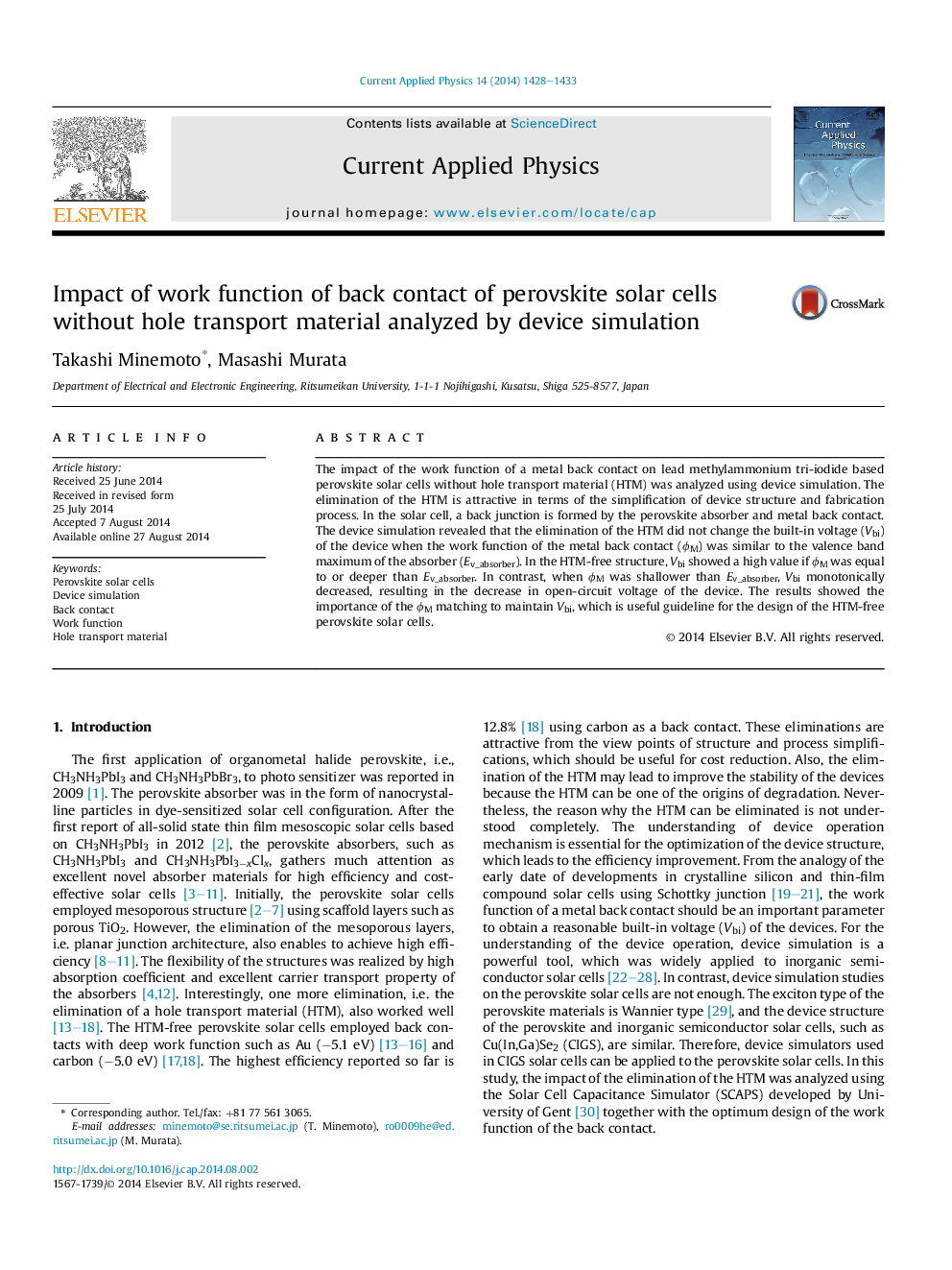| کد مقاله | کد نشریه | سال انتشار | مقاله انگلیسی | نسخه تمام متن |
|---|---|---|---|---|
| 1786291 | 1023412 | 2014 | 6 صفحه PDF | دانلود رایگان |

• Hole transport material (HTM)-free perovskite solar cells was simulated.
• Deeper work function than valence band of absorber maintained high built-in voltage.
• Shallower work function than valence band of absorber decreased built-in voltage.
• Adequate work function gave similar high efficiency without HTM.
• This study showed useful guideline for design of HTM-free perovskite solar cells.
The impact of the work function of a metal back contact on lead methylammonium tri-iodide based perovskite solar cells without hole transport material (HTM) was analyzed using device simulation. The elimination of the HTM is attractive in terms of the simplification of device structure and fabrication process. In the solar cell, a back junction is formed by the perovskite absorber and metal back contact. The device simulation revealed that the elimination of the HTM did not change the built-in voltage (Vbi) of the device when the work function of the metal back contact (ϕM) was similar to the valence band maximum of the absorber (Ev_absorber). In the HTM-free structure, Vbi showed a high value if ϕM was equal to or deeper than Ev_absorber. In contrast, when ϕM was shallower than Ev_absorber, Vbi monotonically decreased, resulting in the decrease in open-circuit voltage of the device. The results showed the importance of the ϕM matching to maintain Vbi, which is useful guideline for the design of the HTM-free perovskite solar cells.
Journal: Current Applied Physics - Volume 14, Issue 11, November 2014, Pages 1428–1433